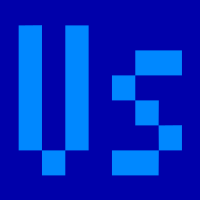And the story continues. See the first part for more information on the background of this series.
The Vintrospektiv Social Media Archive, Part 3: Retrogaming Trivia (Twitter)
At the same time I started my “curiosities” series on Instagram, in December 2020, I also launched this series, with the same mode: one post per day, except for the weekend and days that already featured other posts.
Due to the different format on Twitter, I left out the images so this was only a collection of short facts about retrogames. They originally appeared in a different order (which I can’t remember now), as I had written all of them down in a few sessions and then decided on a whim which seemed fitting at the time of posting.
I will present all of them in English first, and then in German (the original language). Once again, I’m leaving out the hashtags, of which there were fewer than on Instagram because of the stricter character limit.
- Retrogaming trivia: The original Zork (I) by Infocom came out in at least 12 versions, including a mini version on tape for the C64; not counting collections.
- Retrogaming trivia: All known games with speech on the C64 (Impossible Mission, Ghostbusters, Beach Head II and more) received it from the same company: ESS Technology.
- Retrogaming trivia: The adventure Kobayashi Naru (or Kobyashi Naru, as it’s called on the packaging) from 1987 has no relation to the Kobayashi Maru test in the Star Trek universe. The title’s origin is unclear.
- Retrogaming trivia: Arkanoid on the C64 was the first game with a four-voice theme tune. The fourth channel’s drum sounds were not sampled, as is often assumed, but procedurally generated.
- Retrogaming trivia: There is no first part to 1985’s shooter Who Dares Wins II. It was so clearly a clone of the hit Commando that it never arrived in stores, but was directly reworked into part II.
- Retrogaming trivia: In the text adventure The Hobbit the characters react through a random generator. In certain scenes, they must sometimes be asked hundreds of times to perform an action before they comply.
- Retrogaming trivia: The first computer chess game was developed as early as in 1948 by Alan Turing as an algorithm. The first playable chess program was finished only in 1956, but on a 6×6 field without bishops.
- Retrogaming trivia: The now widely used term “roguelike” should really be “apshailike”, since Temple of Apshai, the first game in the Dunjonquest series, came out in 1979 and therefore roughly a year before Rogue.
- Retrogaming trivia: The game Core War came out in 1968 and has since been implemented on all common systems and modernised multiple times. It is the forefather of the “programming game”.
- Retrogaming trivia: The dance/rhythm game Bust-a-Move is called “Bust-a-Groove” in Germany. The original name had already been used here.
- Retrogaming trivia: Kentilla by Mastertronic on the C64 is one of the very few text adventures with music. The music was supposed to change in the course of the game, but that turned out to be too complicated.
- Retrogaming trivia: With the cassette version of The Way of the Exploding Fist on the C64 you had to endure several minutes of loading time just to hear a sampled scream before the game itself was loaded.
- Retrogaming trivia: “Thompson Twins Adventure” for the C64 is the only game that was available (among other formats) as a flexi disc. It had to be transferred to a cassette and then loaded.
- Retrogaming trivia: The hugely successful game Lemmings came out on 25 systems and had 23 official sequels.
- Retrogaming trivia: The first “god game”, Populous, features 501 procedurally generated worlds. The name of each world is used as the “seed” value for the generation process.
- Retrogaming trivia: While Melbourne House was an Australian software company, the published games often used English working class settings, for instance Terrormolinos (1985) or Dodgy Geezers (1986).
- Retrogaming trivia: In the “Micro Adventure” book series you take on the role of “Orion”, an agent with perfect programming skills. The programs can be entered in BASIC on your own computer.
- Retrogaming trivia: The concept of ad games or advergames has existed since the 70s, but was only fully explored in the late 80s. In Germany, the most well-known example is Moorhuhn (for Johnnie Walker) from 1999.
- Retrogaming trivia: There were several hundred games for the unexpanded Commodore VIC-20 with 3.5 KB of memory. In comparison, modern AAA games often exceed 100 GB, which is approximately 30 million times as big.
- Retrogaming trivia: Doom (1993) was a huge success not only because of the then-unparalleled 3D graphics, but also because of the decision to distribute part of the game for free and ask for a shareware fee for the rest.
And now the German originals:
- Retrogaming-Trivia: Das Original Zork (I) von Infocom kam in mindestens 12 Versionen heraus, darunter eine Mini-Version auf Kassette für den C64; Sammlungen nicht mitgezählt.
- Retrogaming-Trivia: Alle bekannten Spiele mit Sprachausgabe auf dem C64 (Impossible Mission, Ghostbusters, Beach Head II u.a.) erhielten diese vom selben Unternehmen: ESS Technology.
- Retrogaming-Trivia: Das Adventure Kobayashi Naru (oder Kobyashi Naru, wie es auf der Verpackung heißt) von 1987 hat nichts mit dem Kobayashi Maru-Test aus dem Star Trek-Universum zu tun. Der Ursprung des Titels ist unklar.
- Retrogaming-Trivia: Arkanoid auf dem C64 war das erste Spiel mit vierstimmiger Titelmusik. Die Drumsounds der vierten Stimme waren nicht gesampelt, wie oft angenommen wird, sondern wurden prozedural erzeugt.
- Retrogaming-Trivia: Zum Ballerspiel Who Dares Wins II von 1985 gibt es keinen ersten Teil. Dieser ähnelte so klar dem Hit Commando, dass er nie in den Handel kam, sondern direkt in Teil II umgearbeitet wurde.
- Retrogaming-Trivia: Im Textadventure The Hobbit reagieren die Figuren durch einen Zufallsgenerator. In bestimmten Szenen muss man sie mitunter Hunderte Male zu einer Handlung auffordern, bevor sie zustimmen.
- Retrogaming-Trivia: Das erste Computer-Schachspiel wurde schon 1948 von Alan Turing als Algorithmus entwickelt. Das erste spielbare Schachprogramm wurde 1956 fertig, allerdings auf einem 6×6-Feld ohne Läufer.
- Retrogaming-Trivia: Der heute viel gehörte Begriff „roguelike“ müsste eigentlich „apshailike“ heißen, denn Temple of Apshai, das erste Spiel der Dunjonquest-Serie, kam 1979 und damit etwa ein Jahr vor Rogue heraus.
- Retrogaming-Trivia: Das Spiel Core War (Krieg der Kerne) erschien 1968 und wurde seitdem auf allen gängigen Systemen implementiert und mehrmals modernisiert. Es ist der Urvater der „programming games“.
- Retrogaming-Trivia: Das Tanz-/Rhythmusspiel Bust-a-Groove heißt in anderen Ländern „Bust-a-Move“. In Deutschland war dieser Name allerdings schon vergeben.
- Retrogaming-Trivia: Kentilla von Mastertronic ist auf dem C64 eines der sehr wenigen Textadventures mit Musik. Eigentlich sollte die Musik sich mit dem Spielverlauf verändern, aber das stellte sich als zu kompliziert heraus.
- Retrogaming-Trivia: Bei der Kassettenversion von The Way of the Exploding Fist auf dem C64 musste man zuerst mehrere Minuten Ladezeit in Kauf nehmen, nur um einen gesampelten Schrei zu hören, bevor das eigentliche Spiel geladen wurde.
- Retrogaming-Trivia: „Thompson Twins Adventure“ für den C64 ist das einzige Spiel, das (unter anderem) als Schallfolie erhältlich war. Diese musste auf eine Kassette überspielt und dann geladen werden.
- Retrogaming-Trivia: Das enorm erfolgreiche Spiel Lemmings erschien auf 25 Systemen und hatte 23 offizielle Nachfolger.
- Retrogaming-Trivia: Das erste „god game“, Populous, wartet mit 501 prozedural erzeugten Welten auf. Aus dem Namen der jeweiligen Welt ergibt sich der „Seed“-Wert für die Generierung.
- Retrogaming-Trivia: Melbourne House war zwar ein australisches Softwarehaus, die veröffentlichten Spiele waren aber oft im Umfeld der englischen Arbeiterklasse angesiedelt, etwa Terrormolinos (1985) oder Dodgy Geezers (1986).
- Retrogaming-Trivia: In der Buchreihe „Micro Adventure“ übernimmt man die Rolle von „Orion“, einer Agentenfigur mit perfekten Programmierkenntnissen. Die Programme können in BASIC auf dem eigenen Computer eingegeben werden.
- Retrogaming-Trivia: Das Konzept der Werbespiele oder Advergames gab es schon in den 70ern, wurde aber erst in den späten 80ern voll genutzt. Das bekannteste Beispiel ist Moorhuhn (für Johnnie Walker) von 1999.
- Retrogaming-Trivia: Für den Commodore VC-20 ab Werk mit 3,5 KB Speicher kamen mehrere Hundert Spiele heraus. Zum Vergleich: Heutige AAA-Spiele sind oft über 100 GB groß, also rund 30 Millionen Mal größer.
- Retrogaming-Trivia: Doom (1993) war nicht nur wegen der damals unerreichten 3D-Grafik ein durchschlagender Erfolg, sondern auch wegen der Entscheidung, einen Teil des Spiels kostenlos zu vertreiben und für den Rest eine Shareware-Gebühr einzufordern.

